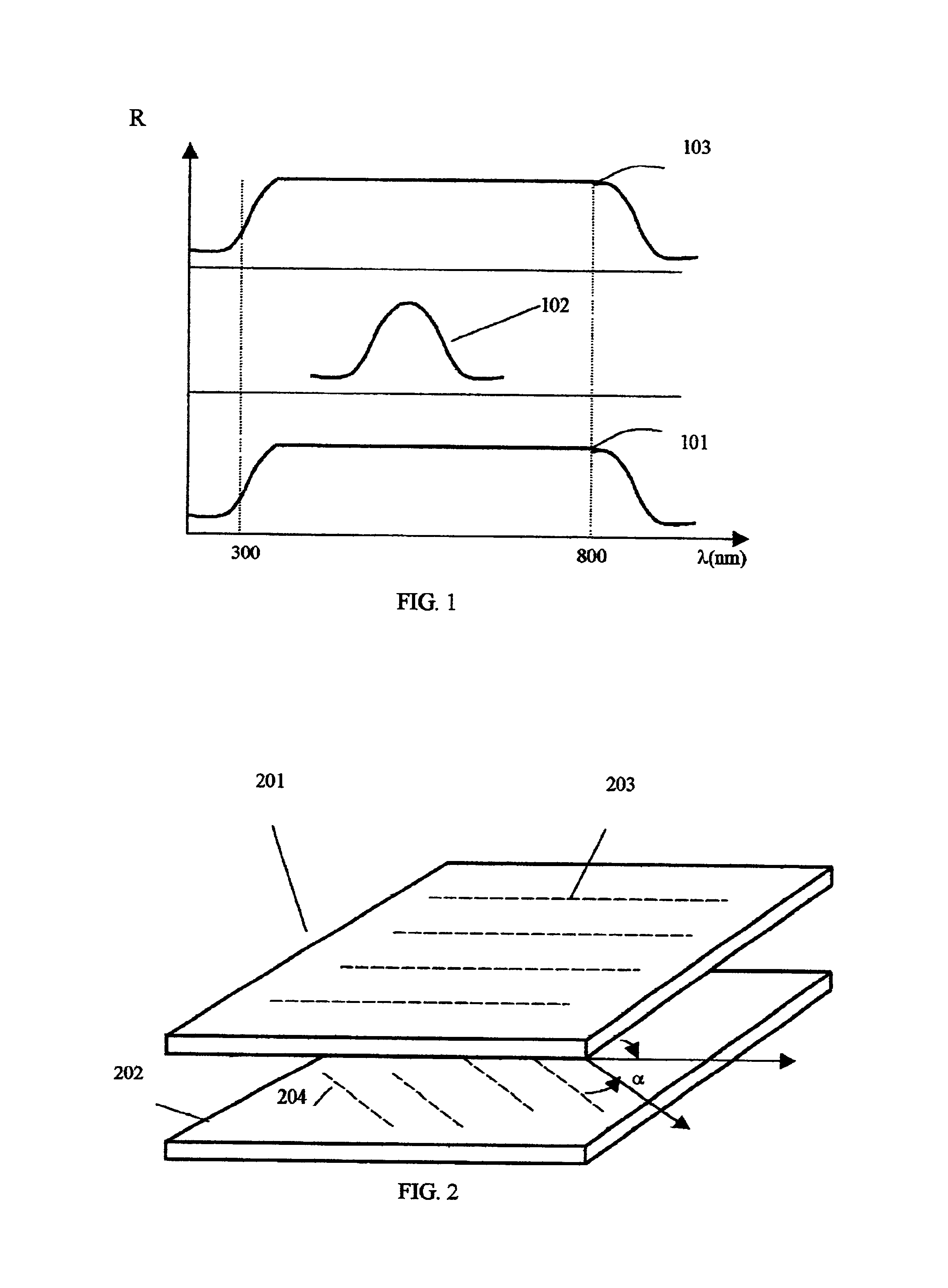Reflective cholesteric displays without using Bragg reflection
a technology reflections, applied in the field of cholesteric liquid crystal displays, can solve the problems of not being qualified in some applications, the overall light utilization efficiency is rather low, and both approaches involve major disadvantages and limitations. , to achieve the effect of excellent mechanical stability, optical stability and uniformity
- Summary
- Abstract
- Description
- Claims
- Application Information
AI Technical Summary
Benefits of technology
Problems solved by technology
Method used
Image
Examples
example 1
A polycarbonate film with a thickness of 0.1 mm, produced in an extrusion process, was laminated with a linear polarizer with 44% transmission and 99.9% polarization efficiency at 46 degrees. The composite film is then attached onto the front outside surface of the cholesteric display by utilizing a pressure sensitive adhesion. The elliptical polarizer was effectively cut off the Bragg reflection in a 70-degree cone.
example 2
A polycarbonate film with a thickness of 0.3 mm, produced in an extrusion process, was laminated with a linear-polarizer with 44% transmission and 99.9% polarization efficiency at 18 degrees. The composite film is then attached onto the front outside surface of the cholesteric display by utilizing a pressure sensitive adhesion. The elliptical polarizer was effectively cut off the Bragg reflection in a 70-degree cone. The 18-degree lamination with the linear-polarizer saves a lot of material compared with 45-degree lamination because much less material will be trimmed off during the lamination process.
example 3
A polycarbonate film with a thickness of 0.6 mm, produced in an extrusion process, was laminated with a linear polarizer with 44% transmission and 99.9% polarization efficiency at 49 degrees. The composite film, with the total thickness of 0.8 mm, is then attached onto the front outside surface of the cholesteric display by utilizing a pressure sensitive adhesion. The elliptical polarizer was effectively cut off the Bragg reflection in a 70-degree cone. This composite layer is self-supportable and it can be used as a cover sheet, a touch panel substrate or front-light guiding plate of the display.
PUM
| Property | Measurement | Unit |
|---|---|---|
| temperature | aaaaa | aaaaa |
| total reflectivity | aaaaa | aaaaa |
| thickness | aaaaa | aaaaa |
Abstract
Description
Claims
Application Information
 Login to View More
Login to View More - R&D
- Intellectual Property
- Life Sciences
- Materials
- Tech Scout
- Unparalleled Data Quality
- Higher Quality Content
- 60% Fewer Hallucinations
Browse by: Latest US Patents, China's latest patents, Technical Efficacy Thesaurus, Application Domain, Technology Topic, Popular Technical Reports.
© 2025 PatSnap. All rights reserved.Legal|Privacy policy|Modern Slavery Act Transparency Statement|Sitemap|About US| Contact US: help@patsnap.com



